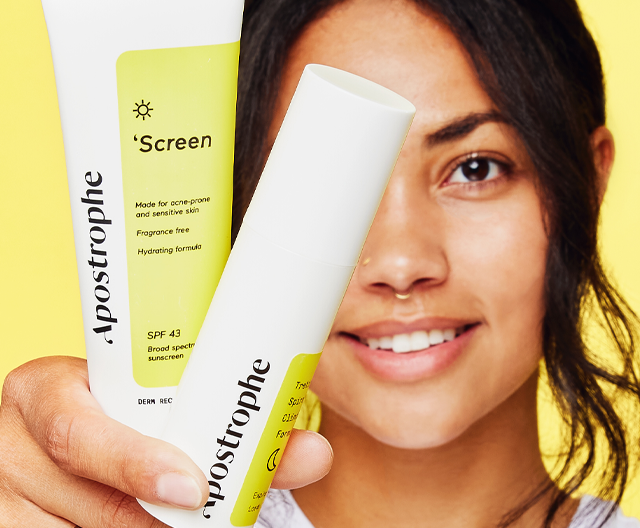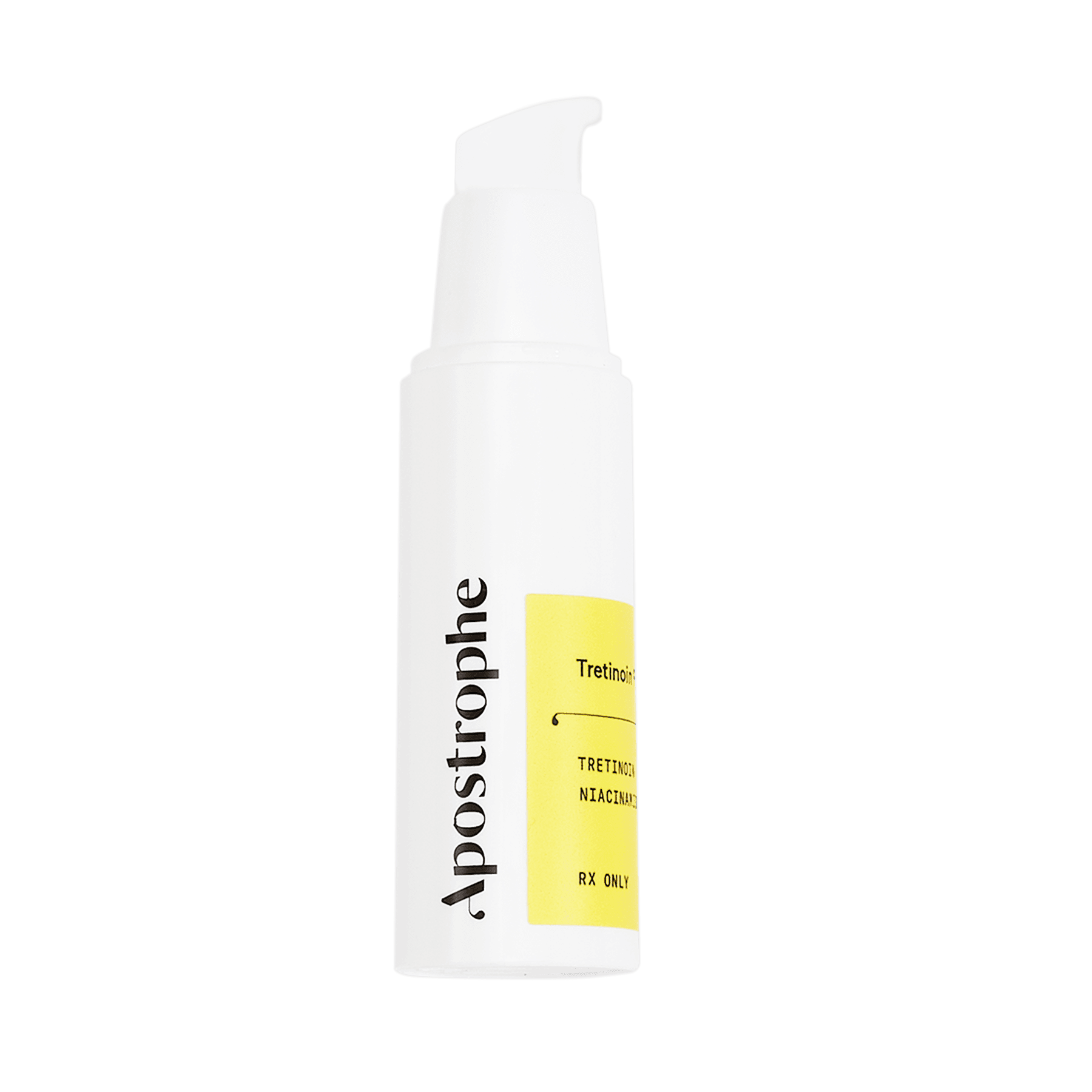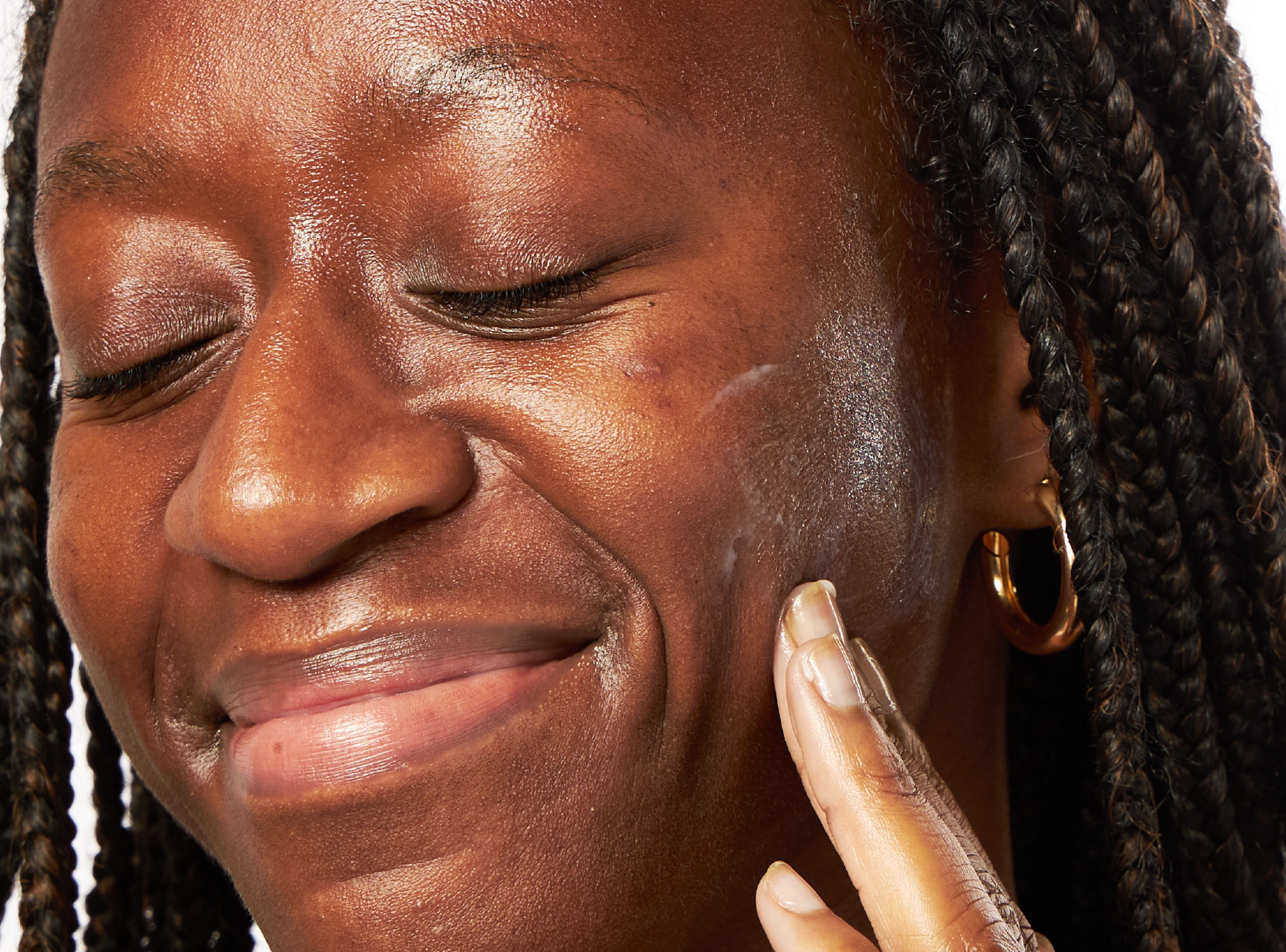Education
Can You Use Hyaluronic Acid With Retinol?


SHARE
Education
Can You Use Hyaluronic Acid With Retinol?
Medically reviewed by Aimee Paik, MD
Written by Apostrophe Team
Last updated 4/5/2024
Hyaluronic acid and retinol are two of the most popular science-based ingredients in anti-aging skin care products.
Hyaluronic acid is widely known for its ability to retain moisture and keep your skin hydrated. In fact, research has found that hyaluronic acid is capable of retaining up to 1,000 times its weight in moisture.
Retinol, on the other hand, is well known for its ability to reduce the appearance of wrinkles and other common signs of aging.
It’s okay to use hyaluronic acid with retinol. In fact, using these two ingredients at the same time may help to make certain side effects, such as dry skin and irritation, less of an issue for you.
Below, we’ve talked more about how hyaluronic acid and retinol work to keep your skin smooth, healthy and less affected by aging. We’ve also explained how you can use them together to get better results from your anti-aging skin care routine.
What Is Hyaluronic Acid?
Hyaluronic acid is a naturally-occurring substance that’s responsible for keeping your skin, joints and other tissue hydrated and healthy.
Your body naturally produces hyaluronic acid. On average, the human body contains around 15 grams of hyaluronic acid in total. Approximately half of this is found in your skin.
Your skin’s hyaluronic acid content tends to decline as you age — one of several factors that can play a role in the development of wrinkles and other common signs of aging.
Hyaluronic acid products are designed to replenish your skin’s hyaluronic acid content and slow down the effects of aging.
You can find hyaluronic acid in moisturizers, anti-aging creams and other products. In addition to topical hyaluronic acid products, hyaluronic acid is also produced as an injectable filler. This form of hyaluronic acid is used to fill in wrinkles, fine lines, scars and other blemishes that can develop as a result of aging or skin damage.
What Is Retinol?
Retinol, or preformed vitamin A, is a fat-soluble vitamin that plays a key role in numerous processes within your body.
Your body depends on vitamin A for vital processes such as cell reproduction and vision. As a skincare ingredient, retinol assists in the growth and maintenance of your skin.
It’s also one of several important vitamins for proper wound healing.
Research shows that products containing retinol may help to improve the appearance of your skin and make the signs of aging less visible.
For example, one study of elderly people found that regular use of retinol lotion helps to improve the appearance of fine wrinkles.
Other scientific research has found that topical retinoids such as retinol are effective at treating and preventing acne.
Anti-aging creams, serums and other skin care products containing retinol are widely available over the counter from drugstores, department stores and online.
Some derivatives of retinol, such as tretinoin (retinoic acid), have stronger effects on your skin and are only available with a prescription.
Can You Use Hyaluronic Acid & Retinol Together?
It’s perfectly safe and okay to use hyaluronic acid and retinol together. Using skin care products that contain these ingredients together shouldn’t cause any interactions or side effects.
Hyaluronic acid and retinol are one of the most popular skin care combinations. This is because the effects of hyaluronic acid can help to make the side effects of retinol easier to deal with.
Retinol and other retinoids can cause dryness, irritation and skin flaking. For example, tretinoin, a common prescription retinoid, is well known for causing a temporary “purge” in which you may experience dry, irritated and acne-prone skin after starting treatment.
Although these effects typically pass in a few weeks, they can be a significant annoyance when they occur.
Using a hyaluronic acid moisturizer at the same time as retinol or tretinoin can help your skin to stay hydrated and may prevent or lighten these side effects.
How to Use Hyaluronic Acid With Retinol
When it comes to combining retinoids and moisturizing ingredients such as hyaluronic acid, it’s best to apply the retinoid first. Try to follow these six steps:
Before applying anything, wash your face using warm water and a mild, gentle cleanser or soap.
Gently pat your skin dry using a clean towel. Make sure not to rub your skin, as this may cause irritation and worsen acne and skin aging.
Squeeze a small amount of retinol cream (or your prescription retinoid, if you have one) onto your fingertip. Carefully apply the cream to your face, focusing on areas affected by aging and/or acne.
Gently massage the retinol cream into your face. Allow one to two minutes for the cream to blend into your skin. If any extra cream is left over on your fingers, carefully wash your hands to remove it. Avoid rubbing the tretinoin to sensitive areas of the face, such as onto the eyelids or skin creases by the nose or mouth.
Apply the hyaluronic acid moisturized after the retinol cream. It’s important to closely follow the instructions provided with the product.
In Conclusion
Hyaluronic acid and retinol can both offer real, science-based benefits for your skin’s health and appearance.
While hyaluronic acid is fantastic for moisturizing your skin, retinol and other retinoids are highly effective at preventing acne breakouts and making wrinkles, fine lines and other common signs of aging less visible.
Follow our instructions above to use both ingredients at the same time for younger-looking skin that’s free of different types of acne.
This article is for informational purposes only and does not constitute medical advice. The information contained herein is not a substitute for and should never be relied upon for professional medical advice. Always talk to your doctor about the risks and benefits of any treatment.
Shop this post

Topical Retinoids
Like what you just read? Sign up for our email list to get the scoop on skincare science delivered straight to your inbox.

Deep Dives
A dermatologist shares his thoughts on the recent studies about benzoyl peroxide and benzene.
Read More
Education
What is milia?
What is milia? Today, we’re jumping into one type of bump that you may have heard about most commonly in infants — milia.
Read More
Education
Best moisturizer for acne-prone skin
If you have combination acne-prone skin, figuring out which moisturizer is best for your skin might be tough. In this guide, we break down the best moisturizer for combination, acne-prone skin.
Read More
